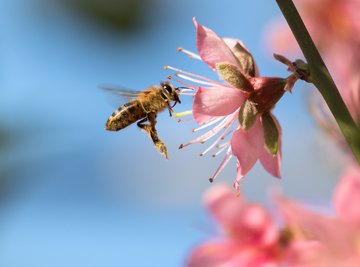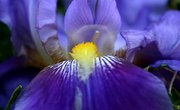
The flower is a structure that, in plant evolution, has freed plants from their need to have water for the sperm to swim to the egg and carry out fertilization. Ferns, as a group, provide an example of plants that have not developed this mechanism; ferns are not flowering plants and they rely upon free water as a medium for fertilization. All flowering plants, by comparison, must carry out pollination. The means by which they accomplish this vary greatly but can be considered in two basic groups: those using wind pollination and those using other means.
Male Flowers
As with flowers pollinated by other means, such as insect-pollinated flowers, the pollen of wind-pollinated flowers comes from the male flower parts. The male flower part is called the stamen, and the pollen is produced at the tip of the stamen filament, on a terminal section called the anther.
Female Flowers
The essential female flower part is called the pistil. The tip of the pistil is called the stigma, the center the style and at the base is the ovary. Whereas flowers pollinated by insects have an additional structure called the nectary, wind-pollinated flowers generally lack this feature. Since they rely on air currents for pollination, they’re not adapted to produce nectar to attract insects or other pollinators.
Wind and Pollen
Life takes advantage of the fluid nature of the atmosphere in a multitude of ways. Birds fly in it in a way comparable to fish swimming in water, while many plants rely on air currents to carry and disperse their seeds. The wind-pollinated flowers are adapted to use the atmosphere to deliver their pollen from the male flower parts to the female flower parts.
Seed Development
Once pollination has been accomplished, wind-pollinated flowers grow, develop and mature into fruits and seeds in much the same way as flowers pollinated by other means.
Maturity
Of course, flowers—whether wind-pollinated or pollinated by a biological agent like an insect—don’t exist in isolation. The flower is an integral part of the plant as a whole. Like other living things, the wind-pollinated plant must complete its life cycle to get to the next generation. Once the mature plant has completed the cycle and produce flowers of its own, the male flowers of this next generation will produce pollen to be delivered, by wind once again, to the female flowers.
References
About the Author
Donald Miller has a background in natural history, environmental work and conservation. His writing credits include feature articles in major national print magazines and newspapers, including "American Forests" and a nature column for "Boys' Life Magazine." Miller holds a Bachelor of Science in natural resources conservation.
